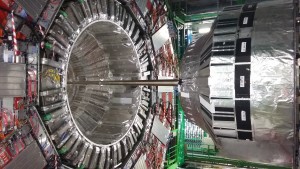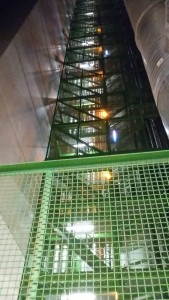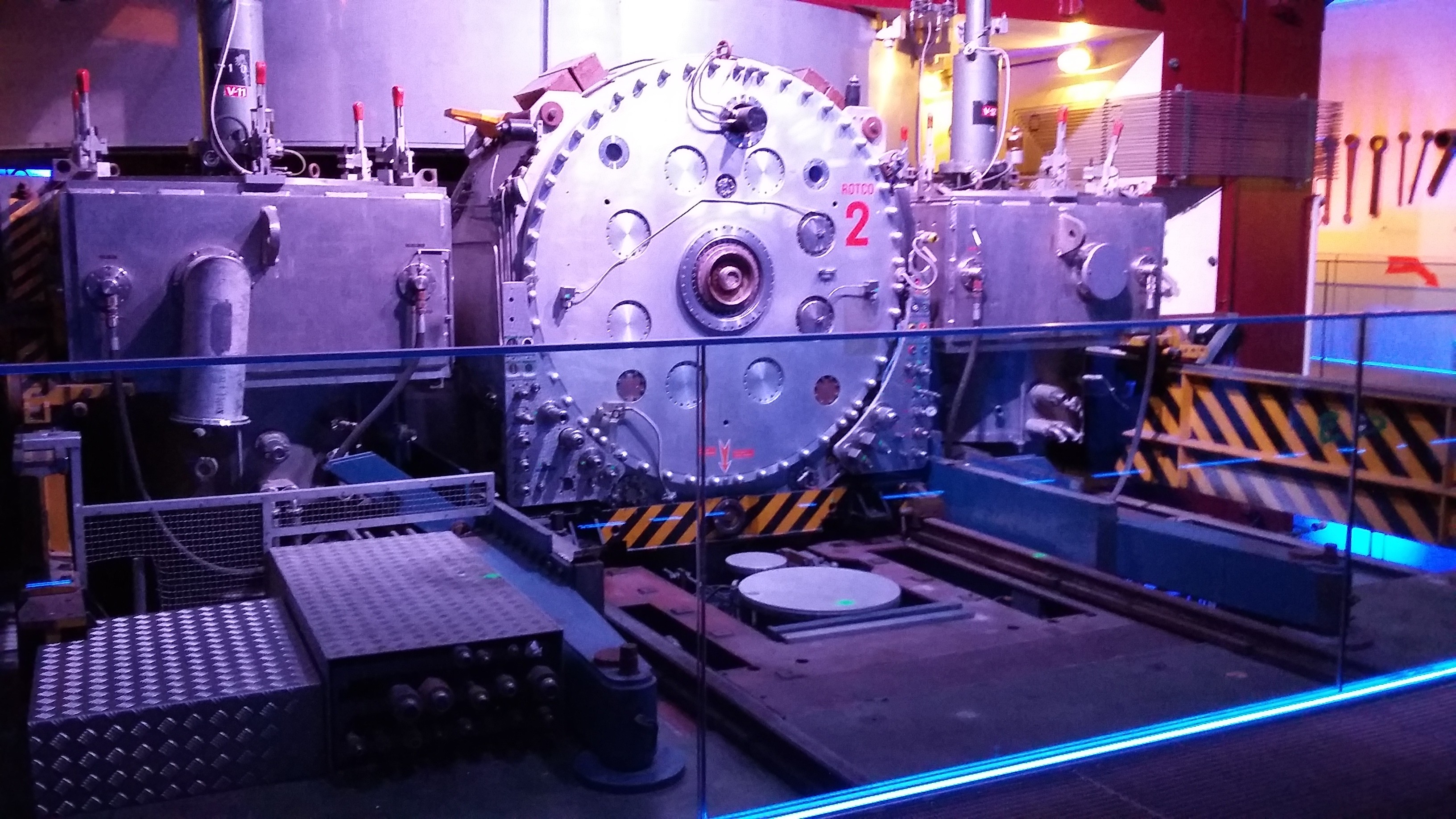To complement my A level physics course, my school organized a trip to Geneva to visit CERN (the European Organization for Nuclear Research, or officially: Conseil Européen pour la Recherche Nucléaire), the research facility for particle physics – we also checked out the United Nations Office, and the Red Cross Museum, but I was really just there for the sub-atomic particle interactions…
There are 21 countries who are CERN member states, with 3 countries in the process of becoming member states, and a further three interested in joining the program. Alongside this, some countries have “observer” status and many are involved in various programs. CERN’s annual budget is roughly CHF 1 bn and this sum comes from member states, whose contribution is calculated with their financial status in mind.
The particle collisions that most people associate CERN with, occur in the Large Hadron Collider (LHC ) at 14 TeV (Teraelectronvolt, a unit of energy. To compare, the electrons in televisions are accelerated to a meagre 20,000 eV). The LHC tunnel is 27km in circumference and lies over 100m beneath the ground. This is partly because being below ground reduces unwanted background radiation that could interfere with experiments, but also because buying land can be expensive, and expanding the particle accelerator below the earth was much more financially feasible! CERN has four detectors where collisions take place: CMS, LHCb, ALICE, and ATLAS. The massive ATLAS detector is 25m in diameter and 46m long, and another fun thing is that CERN sends neutrinos to Italy through the tunnels, for observation. The LHC tunnel itself is situated under the Swiss-France border, so we took a quick bus ride into France in order to view CMS (Compact Muon Solenoid), which is a mere 22m long.

Digging for CMS began in 1999, and as is usually the case with large engineering projects, a Roman villa was unearthed. CMS weighs 14,000 tonnes and the questions that CMS hopes to answer include matter-antimatter asymmetry (why is there more matter than antimatter in the universe, when in experiments every particle of matter has a corresponding particle of antimatter?), supersymmetry, more dimensions, and additions to the standard model.
CERN is also home to the coldest place in the universe, with labs having reached as low as 1.7 Kelvin (0 Kelvin is known as Absolute Zero, and is theoretically the lowest temperature matter can reach – about -273.15°C/-459.67°F), allowing materials to become superconductive i.e. no electrical resistance, which would have many applications in industry if it weren’t so difficult a temperature to reach. In addition to this, ALICE hosts the hottest temperature in the galaxy, where conditions go beyond even the plasma stage.
 We can only see around 5% of the estimated mass of the universe, with the rest being dark matter and dark energy. So why do CERN physicists seem to repeatedly fire protons at one another? Every proton-proton collision is different because of how the quarks within the protons are behaving at the time; they might be rotating differently or have varying speeds. And this is why physicists are still prepared to discover new fundamental particles, as each collision could bring profound new data, such as the Higgs boson, which was discovered in a similar way at CMS. But with so much data collected from all these collisions*, it would be impossible to sift through these by hand, in the hopes of discovering a pattern or anomaly that might indicate such a new particle. And this is why only 20% of people at CERN are physicists. The vast majority are engineers, with around 35% specializing in computing. So much work is put into developing and enhancing code that will check data in seconds, choosing around 100 to be analyzed by humans.
We can only see around 5% of the estimated mass of the universe, with the rest being dark matter and dark energy. So why do CERN physicists seem to repeatedly fire protons at one another? Every proton-proton collision is different because of how the quarks within the protons are behaving at the time; they might be rotating differently or have varying speeds. And this is why physicists are still prepared to discover new fundamental particles, as each collision could bring profound new data, such as the Higgs boson, which was discovered in a similar way at CMS. But with so much data collected from all these collisions*, it would be impossible to sift through these by hand, in the hopes of discovering a pattern or anomaly that might indicate such a new particle. And this is why only 20% of people at CERN are physicists. The vast majority are engineers, with around 35% specializing in computing. So much work is put into developing and enhancing code that will check data in seconds, choosing around 100 to be analyzed by humans.
I was pleasantly surprised to find that I could understand nearly all that was being discussed, and this visit put into perspective the sort of particle physics I had been learning about at school over the past few years; I encourage anyone planning on visiting the area to book a CERN tour.
*Fun CERN trivia: Apparently 1 year of data gathered with the LHC on CDs would stack up to be around 20km long.

